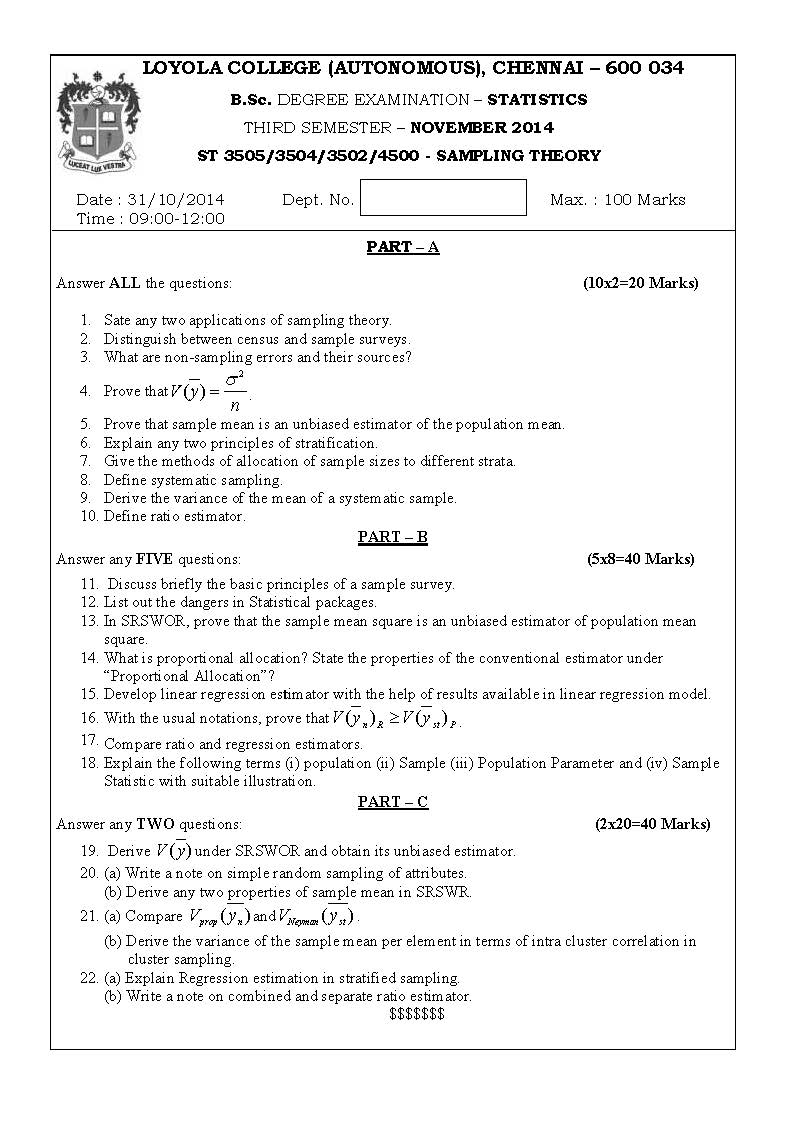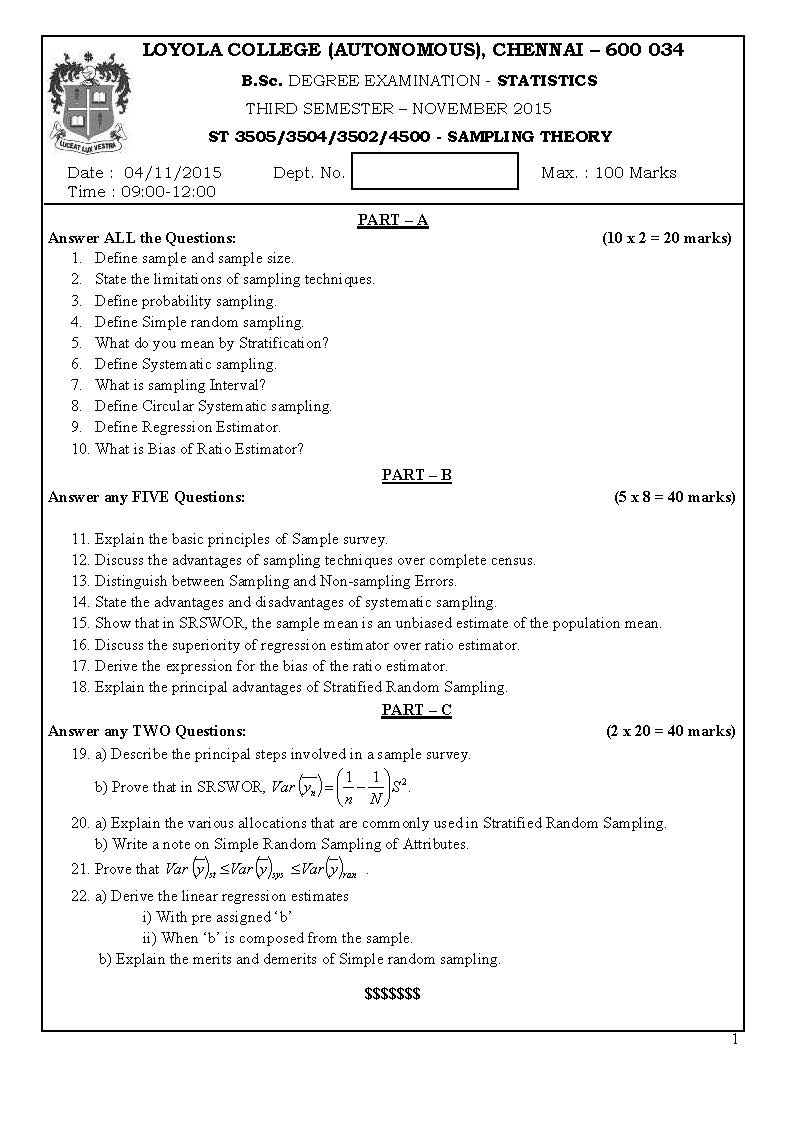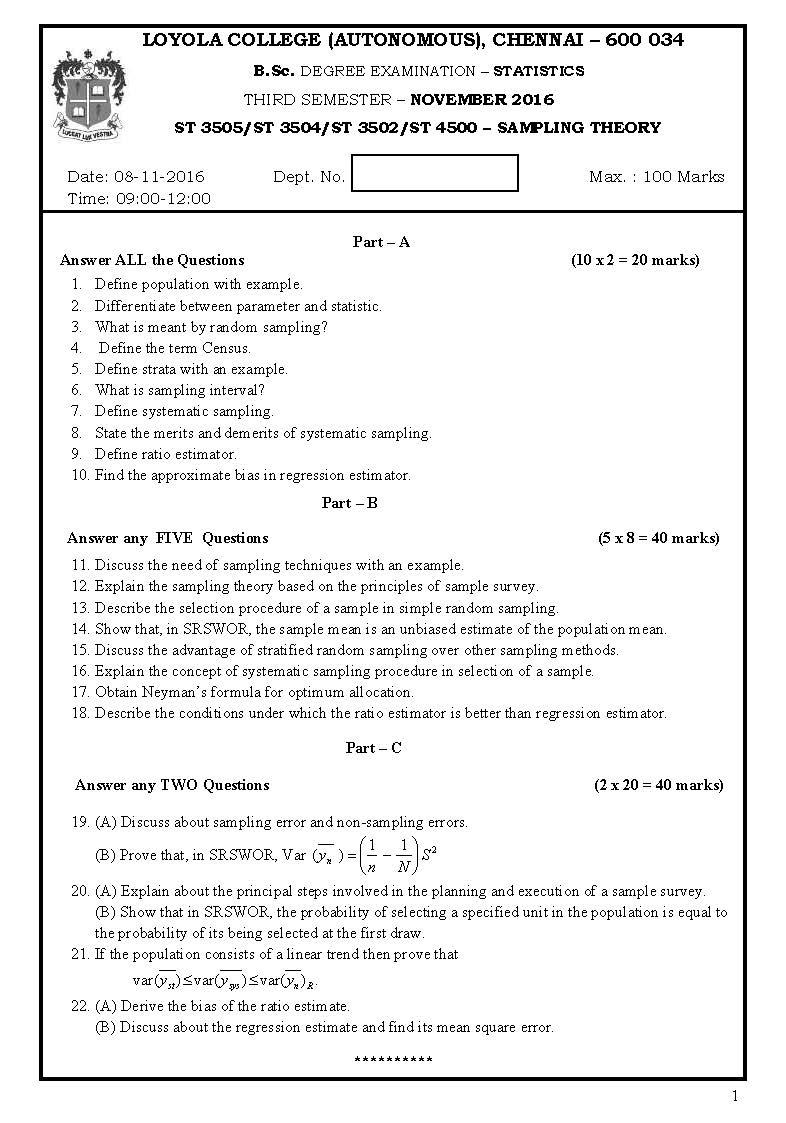LOYOLA COLLEGE (AUTONOMOUS), CHENNAI-600 034.
M.Sc. DEGREE EXAMINATION – STATISTICS
FIRST SEMESTER – APRIL 2003
ST 1802/ S 717 SAMPLING THEORY
08.04.2003
1.00 – 4.00 Max: 100 Marks
SECTION – A (10 ´ 2 = 20 Marks)
Answer ALL the questions. Each carries two marks
- Let the sampling design be
If N=3 then what is the value of p68?
- Given a fixed size sampling design yielding sample of size 5, what is the value
of ?
- Under what condition the mean square error of an estimator becomes its variance?
- List all possible balanced systematic samples of size 4 when N = 12.
- Under usual notations order VSRS, VSYS,VSTR assuming the presence of linear trend.
- Name any two methods of PPS selection.
- When N=16 and n = 4, what will be your choice for random group sizes in random group method? Give reason.
- Define ratio estimator for the population total.
- Name any two randomised response techniques.
- Explain the term: Optimum allocation.
SECTION – B (5 ´ 8 = 40 Marks)
Answer any FIVE. Each carries eight marks.
- Show that under SRS,
where
- Explain any one method of PPS selection in detail with a supportive example.
- Show that under balanced systematic sampling, the expansion estimator coincides with the population total in the presence of linear trend.
- Derive the mean square error of and obtain the condition under which is more
efficient than .
- Explain the usefulness of two phase sampling in pps sampling.
- Describe in detail any one method of Randomised Response technique.
- Derive under Neyman allocation.
- Verify the following relations with an example
(Proof should not be given)
Section – C (2 ´ 20 =20 Marks)
Answer any TWO questions. Each carries twenty marks.
- Describe random group method. Suggest an unbiased estimator for the
population total and derive its variance.
- Derive the first and second order inclusion probabilities in Midzeno sampling and
show that the Yates-Grundy estimator is nonnegative
- Develop Yates-corrected estimator.
- (a) Describe how double sampling is employed in ratio estimation (10)
(b) Write a descriptive note on two stage sampling. (10)



